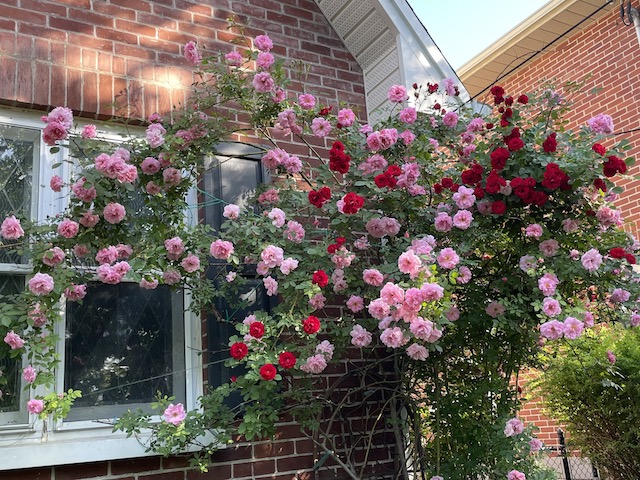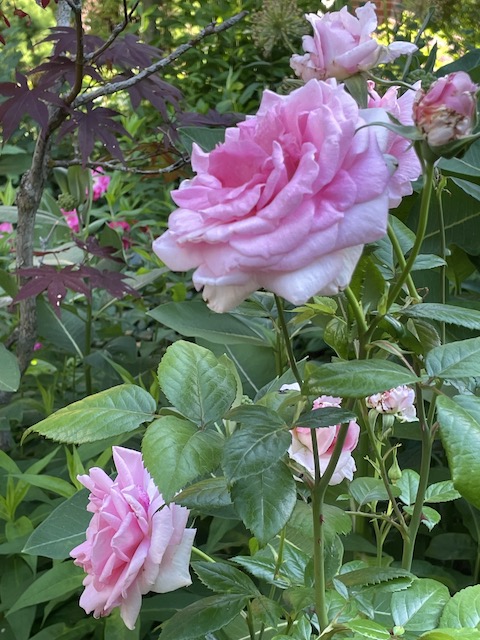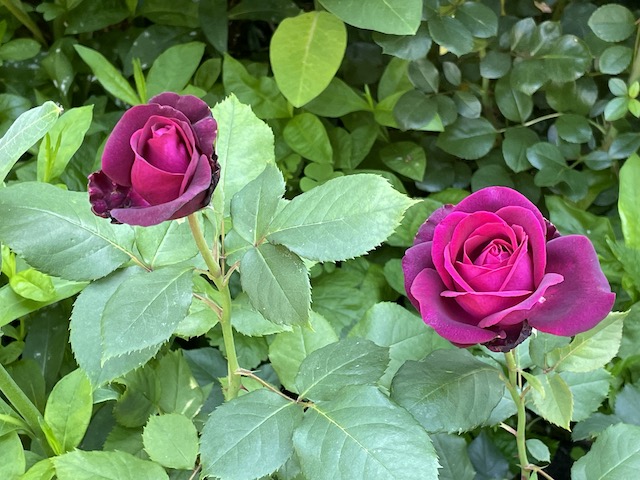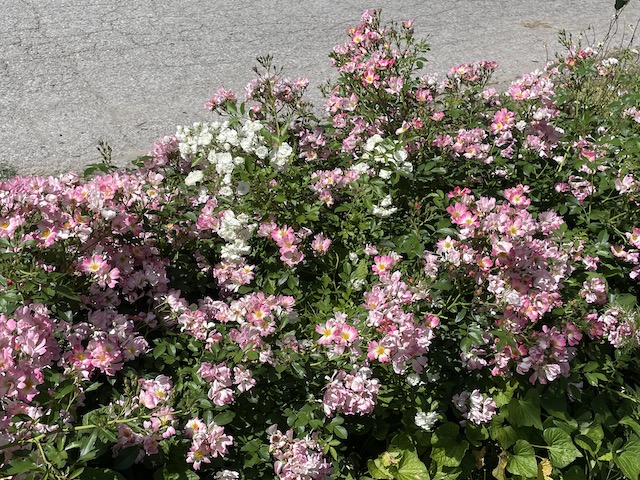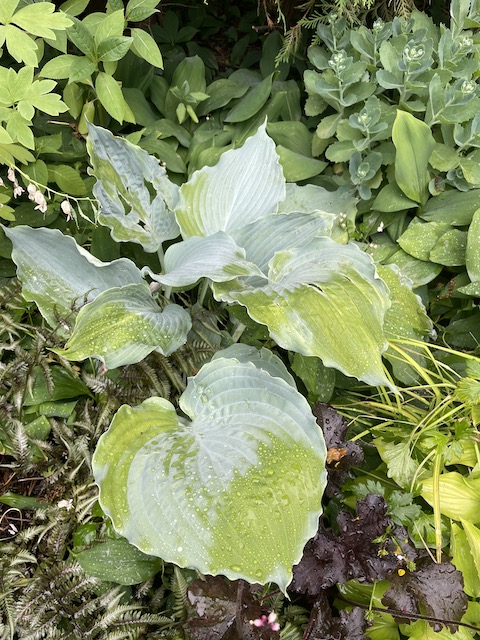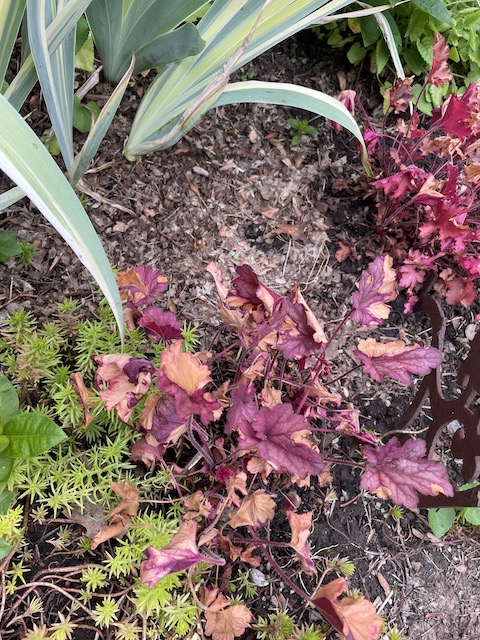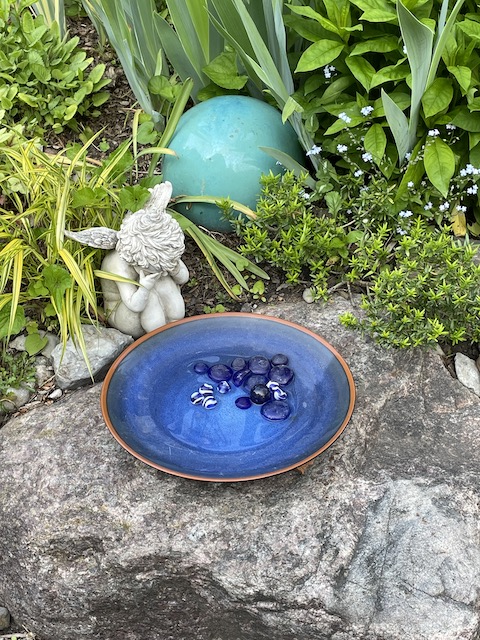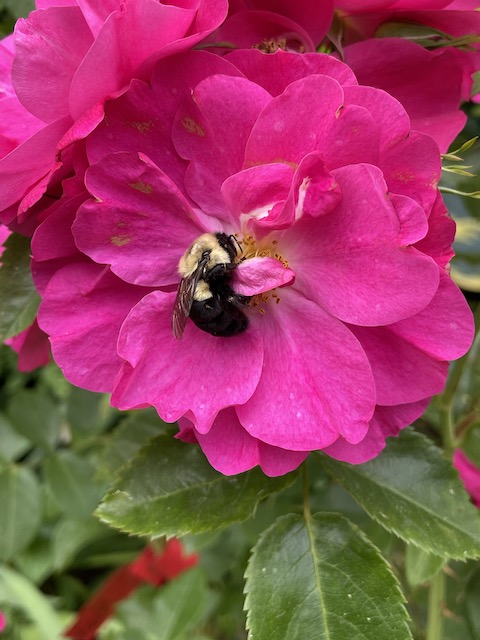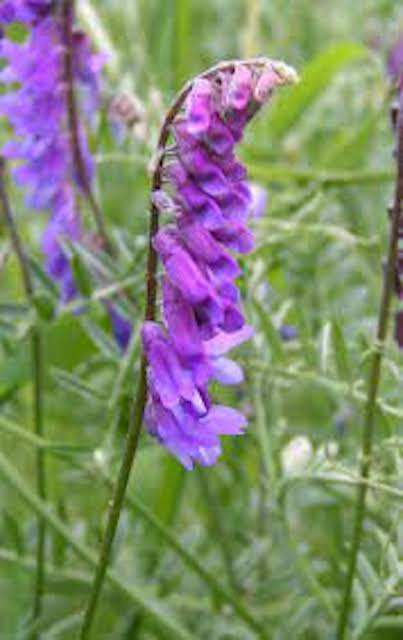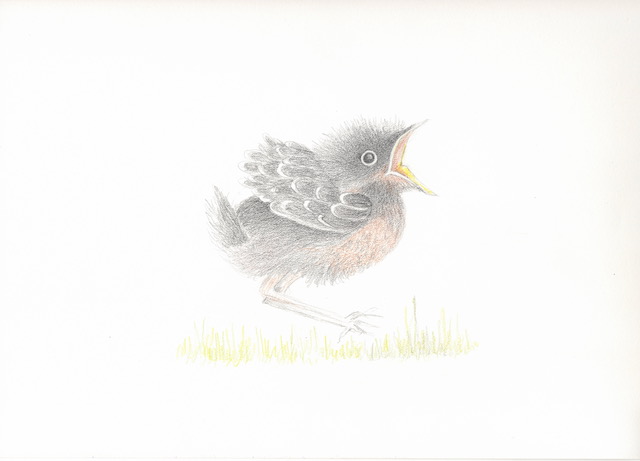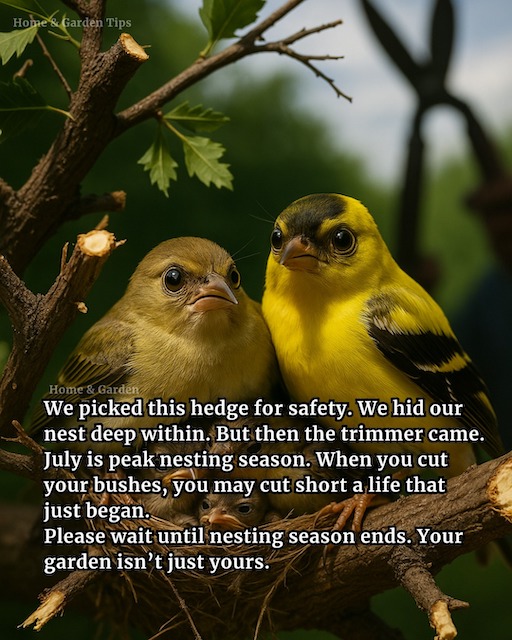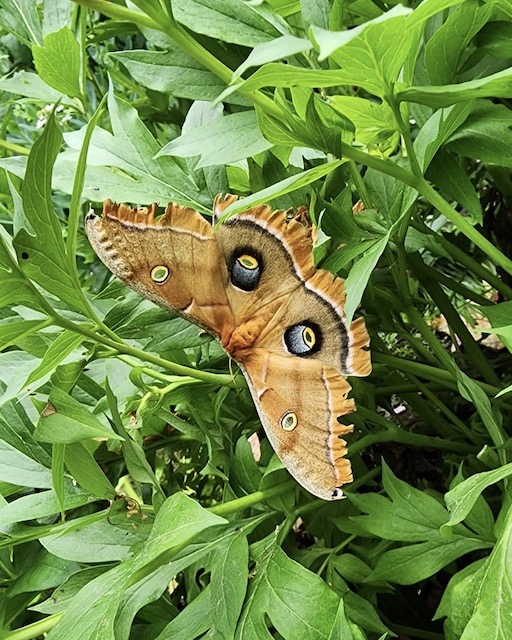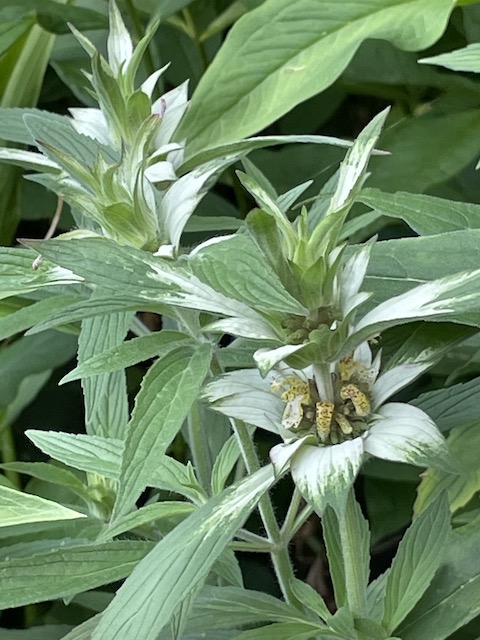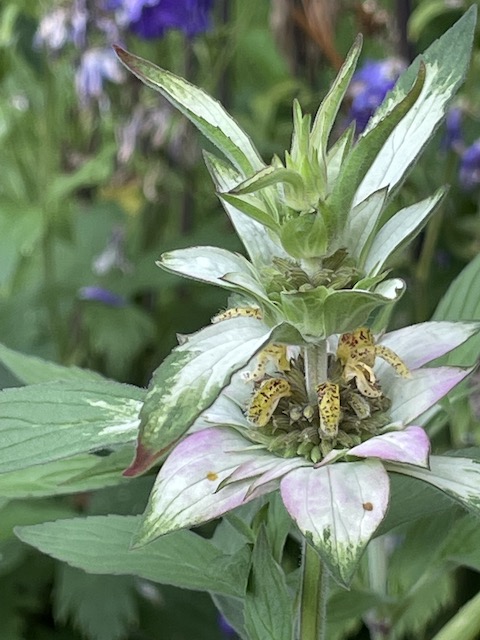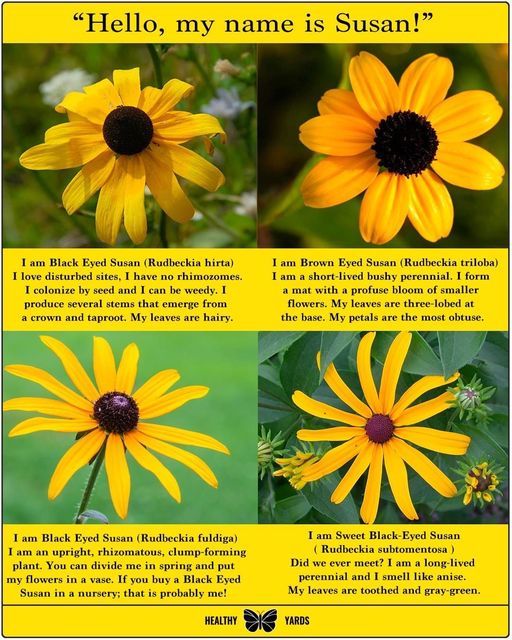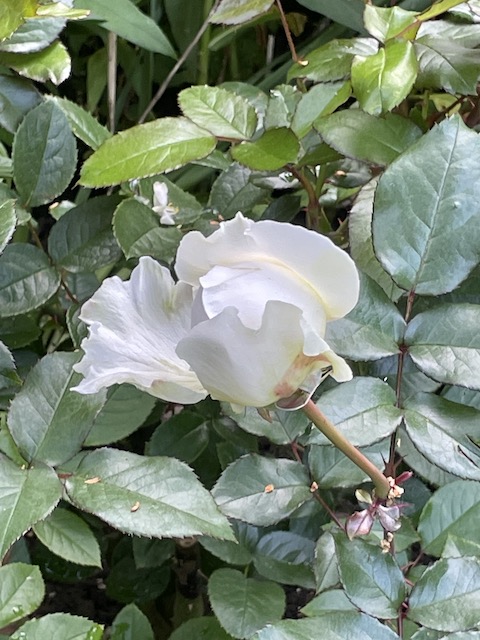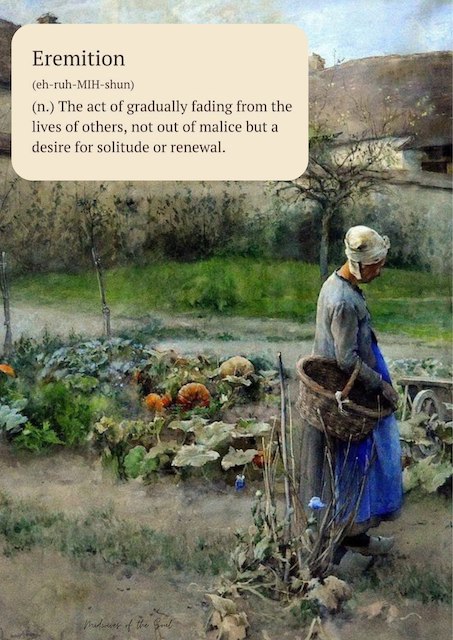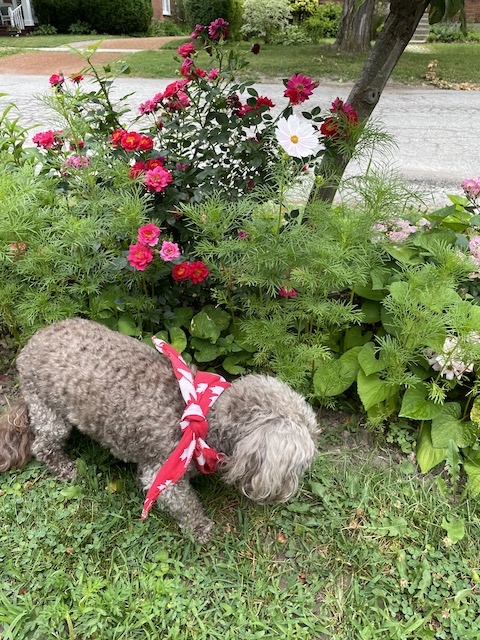| Back to Back Issues Page |
 |
|
Garden Bliss & Blunder, Issue #49 July 06, 2025 |
July Hot Hot Hot -ooh la laRoses Love the Heat...In spite of the fact I don't like or appreciate the heat, roses love heat ... but they need water: especially those that have been recently planted.Of course I "needed" 4 more roses.... they had been in pots since coming from the grower, planted in "un-soil"- as I call it - so I rinsed the potting soil away and planted the roses deeply. Now with temperatures in the 90's (high 30's C)... I water early in the morning and in the evening to make sure the root gets the water, not just the leaves. Some gardeners say, " I don't need to water, it's going to rain tonight" but then, of course, it doesn't. And even IF it rains, in a crowded garden like ours, the rain runs off the leaves and seldom makes it to the roots at soil level. .. rain is RARELY enough for newly planted anything.
The pink roses are "John Davis" (Canadian Explorer series) The red is "Improved Blaze" - both climbers on their own-roots.
New rose: "James Galway" a David Austin and hardy to zone 5
New rose: "Dark Desire"
When I prune in spring, I take a few fresh stems and literally stick them into a pot of soil. In the fall, many of them took root so I planted them amidst these roses.... They get no water (except the first week or so after planting) as the garden hose doesn't reach and I seldom carry a watering can there.. In the winter I cover them with leaves and they get pummelled with sand, salt and heavy snow.... In the spring, I prune them back rather severely and now they look like this..... Hostas don't like heat...
We had a late spring, severe ice storm that took down a lot of trees and affected some gardens by removing the tree canopy and subsequently, shade. Some previously sheltered and shaded Hosta are now exposed to blistering heat and sun. Cut off the largest affected leaves at first, then in following weeks, cut the rest and new leaves will emerge.... when the temperature cools, move it to a shadier spot. In the meantime, if you are concerned about saving a special one, shade it with branches or a child's umbrella. Watering...
I'm not advocating naked watering unless you have pretty laid-back neighbours... I confess to being a bit exasperated, having to water when the heat is oppressive but this is my garden and my responsibility to care for it. Unless we have a gentle, full day of rain, I will need to water... Your garden will thank you. A short burst of rain just washes the dust off the leaves and only stays long enough to evaporate, never making it to the thirsty soil. so.... Water intentionally in the morning and evening if you have days without rain. Water only at the root of each plant... egads, you say... yup... each plant which then gives you time to actually SEE your garden and if anything needs attention (with a camera or a pair of secateurs or even a shovel) Water your annual pots every day and feed them once a week. The rest of your garden only needs compost spring and fall SADLY, In spite of my watering, this Heuchera, usually in part sun part shade, did not like the heat or hot sun and made it clear by sporting crispy leaves. I will dig it up in the cooler evening, and plant it in a pot I can baby for a bit and later, I will plant it deeper, trimming off the crispy leaves, watering it well... - along with a few words of support and crossed fingers. ...sigh
Bees...
Put some small flat stones or marbles in a flat dish so they have somewhere to rest while they drink ... otherwise, they can drown if the water is too deep. Keep it fresh.
Invasive? maybe...?Although this is a bit long - it's important: I recently saw the new, (impressive) invasive plant list for Ontario and was surprised to see the plant "Vetch" on it.... Some years ago, a few Master Gardeners were invited to consult with the landscape crew at the Peterborough Lift Lock. The canal leading up the lock is supported by a huge earth dam that towers high above the road. The series of locks allows boats to navigate the canal system from a lake at a higher altitude to another lower down. These earth dams were - and are - covered with "vetch" and when we met with the crew they said there were complaints from local citizens "the Trent Canal System should really get rid of that weed." The crew explained to us and the community that the "weed - Vetch" was holding up the earth dam. It's massive tangled root system holds soil together. So when I saw the name "Vetch" as an invasive I was curious. This is where the Latin name is essential to know whether your "weed" is - or - is not invasive and what you may or may not... need to do about it. Some of the plants deliberately on earth dams along canals: GOLDENROD: (Solidago); ASTERS; MILKWEED (Asclepius tuberosa) WILD GRAPE (vitis) PLANTAINS (Plantar) and VETCH (Vicia cracca) The Invasive list uses the word "Vetch; Latin name:: "Securigera varia"... But the one on the earth dam, also called "Vetch" is Vice cracca
Imagine the possible consequences of not knowing which is which?
Vetch (Vicia cracca) - Photo: Wikipedia
Open it and bookmark it because it is an incredible piece of work. It was created by: SOCIETY for ECOLOGICAL RESTORATION (SER): SER advances the science, practice and policy of ecological restoration to sustain biodiversity, improve resilience in a changing climate, and re-establish an ecologically healthy relationship between nature and culture. www.ser.org SOCIETY for ECOLOGICAL RESTORATION ONTARIO: Led by dedicated volunteers, SER Ontario Chapter focus on regional issues and provides the opportunity to meet and work with other restoration professionals, attend workshops, events and engage with your local community. chapter.ser.org/ontario
Society for Ecological Restoration Baby birds...
My sketch of a baby bird - or Fledgling - it’s time for baby birds to begin to leave their nests. If you see a baby (fledgling) on the ground, please know it is most likely NOT hurt. Fledglings learn to fly from the ground up ...so let them be. Please don’t touch it or remove it … it’s Mom knows exactly where it is and is off finding food and will be back… you may even hear her (or Dad) calling. Fledglings have all their feathers and hop or flutter about on low branches or under vegetation while they learn to fly…. Fledglings are often left alone for short periods while their parents forage for food, so watch from a distance to see if the parents are nearby. PLEASE keep cats indoors: If the baby is in immediate danger (e.g., on a road or near a predator), gently place it on a nearby branch or in a sheltered spot. Fledglings should be cared for by their parents whenever possible, as they have specific dietary needs - but: If you are unsure about the fledgling's condition or if it appears injured or sick, contact a local wildlife rehabilitation center for advice. (LINKS BELOW) Pruning hedges? Not yet...
from Home and Garden Tips Giant Silk Moth...
Giant Silk Moth (danthenatureman) What a thrill to find this beauty on the Itoh Peony ! I didn't know these gorgeous creatures show themselves in June, here in Ontario. Imagine being inside a cocoon from late in the summer, nestled there all winter and spring. Finally emerging in June where it finds the nutrients that create its beautiful wings. It's one of the largest moths north of Mexico! The newly "born" female sends out her own personal pheromone to attract a male who could be as far away as a kilometre. This one is likely a female because the males have big, feathery antennae in order to locate those pheromones. She'll lay a couple of hundred eggs on tender leaves that her young caterpillars can munch on.
Favourite new plant...
SPOTTED BEE BALM - (Monarda punctata) a unique perennial I like that it is from the mint family and gives off a slight sweet smell. Spotted Bee Balm contains Thymol, the same oil found in thyme and oregano, making it a great native substitute for these Mediterranean herbs. Interestingly, Thymol is an antiseptic still used today in mouthwashes such as Listerine. Throughout history, Spotted Bee Balm had many medicinal uses. The Meskwaki tribe historically used a compound of the leaves of Spotted Bee Balm to ease stomach cramps, headaches, and fevers. It was also used as a snuff to lessen mucus build-up and head colds, as well as to revive deathly sick patients. The Ojibwe used Spotted Bee Balm to ease stomach sickness and constipation. Credit: JN MasterID: 1351 Author:Beth DeLain www.jniplants.com (Johnsons Nursery - link below) . Spotted Beebalm prefers hot and dry areas of your garden with slightly sandy soil. Flowering begins in mid-summer and carries on into the fall. An important perennial for attracting Lycaenides melissa samuelis (Karner Blue) butterfly, which is among the endangered species in Ontario.
Alliums...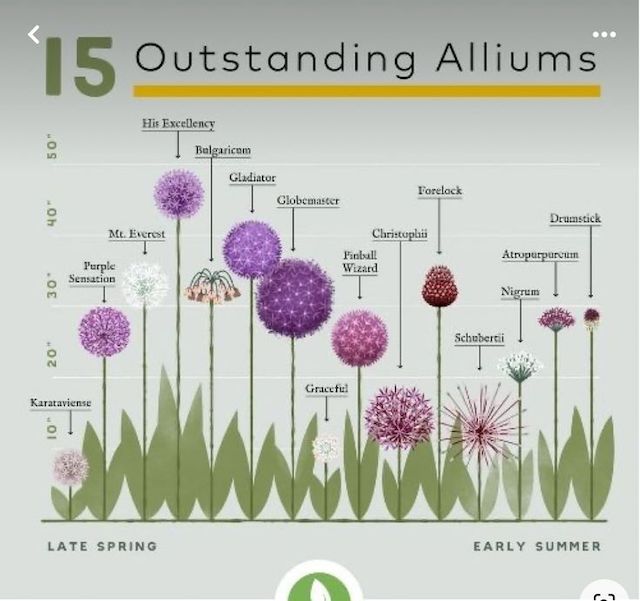
These stately 'balls' are stunning as they float above spring plants... as the stems dry, the heads become balls of seeds.... leave them for interest and a new batch next year, or if you don't want their seedlings, remove the stems. Bulgaricum and those whose heads look like stars are our favourites. Brown-eyed Susans...
There are many different forms of Rudbeckia and I love to see them in gardens or roadsides... they always make me smile. Thoughts...
'While nations are convulsed with rage, how quietly the flowers and grass grow.'
~ E.H. Chapin (1814-1880)
White Bolero Rose
There is much we can do no matter the chaos out there. .. find one person who needs you... do one little thing.. Buy someone a cup of coffee ... for the car behind you in the drive-through, or leave a bit for a "pay-it-forward" fund at your favourite coffee shop. .. you'll know... smile at a stranger wave at a neighbour... Give some of your kindness away... there will be lots more when you do. Buy a book.... buy some art.... and have ice cream every day....
Until Next time....
Books...If you love trees, you will love the novel "GREENWOOD" by Michael Christie Keep reading.... support your local bookstore...
Eremition...
Sit still and look at your garden.... not what you still need to do, but what you have already done. Appreciate it is out there just growing... not whining, or complaining, or yelling... just quietly doing what it does.... and gives you.... us... joy. Lucy says...
She hopes you all had a special Canada Day. ... sniffing roses, leaving p-mail messages for doggo friends and then getting lots of snuggles ... and treats, of course
Back Issues for Garden Bliss & Blunder
|
| Back to Back Issues Page |

